A 2-section treatment table is a fundamental piece of equipment in various healthcare practices, wellness centers, and therapeutic facilities. Finding the right treatment table is essential to ensure optimal patient comfort, safety, and efficient delivery of treatments. With a wide range of options available, selecting the perfect fit for your practice can be a challenging task. In this article, we will explore the key factors to consider when choosing the right 2-section treatment table that aligns with your practice's needs and enhances the overall patient experience.
1. Assessing Patient Needs and Treatment Modalities
As healthcare professionals, understanding and assessing patient needs is a fundamental aspect of providing effective and personalized care. Each patient is unique, and their individual requirements must be carefully evaluated to tailor treatment modalities that address their specific health concerns. In this article, we will explore the importance of assessing patient needs and delve into the various aspects of treatment modalities that contribute to comprehensive and patient-centered care.
Importance of Assessing Patient Needs
Assessing patient needs is the cornerstone of patient-centered care. It involves gathering relevant information about the patient's medical history, current health status, lifestyle, preferences, and goals. Here's why this process is crucial:
- Personalized Care: Understanding patient needs allows healthcare providers to create individualized treatment plans that consider the patient's unique circumstances and preferences.
- Accurate Diagnosis: Thorough patient assessment aids in accurate diagnosis, helping healthcare professionals identify the root cause of health issues and develop appropriate treatment strategies.
- Improved Outcomes: Tailoring treatment based on patient needs can lead to better treatment outcomes and patient satisfaction.
- Informed Decision-Making: Patient assessment empowers both the patient and the healthcare provider to make informed decisions about treatment options.
Aspects of Patient Assessment
To comprehensively assess patient needs, healthcare professionals should consider the following aspects:
- Medical History: Gathering the patient's medical history, including past illnesses, surgeries, and chronic conditions, provides essential insights into their health journey.
- Current Health Status: Assessing the patient's current health status, symptoms, and vital signs helps identify any immediate health concerns.
- Lifestyle and Habits: Understanding the patient's lifestyle, dietary habits, exercise routine, and stress levels provides a broader context for their overall well-being.
- Social and Family Support: Evaluating the patient's social and family support systems is vital, as it can impact their ability to adhere to treatment plans.
- Psychological and Emotional Health: Assessing the patient's emotional and mental well-being is critical, as mental health can significantly influence physical health and treatment outcomes.
Treatment Modalities
Treatment modalities refer to the various methods and interventions used to manage and address patients' health conditions. Depending on the patient's needs and the nature of their health concerns, different treatment modalities may be applied. Some common treatment modalities include:
- Medications: Prescribing medications to manage symptoms or treat underlying health conditions is a common treatment modality.
- Therapies: Physical therapy, occupational therapy, and speech therapy are examples of therapies used to improve function, mobility, and communication.
- Surgical Interventions: In cases where medical interventions are necessary, surgical procedures may be performed to address specific health issues.
- Lifestyle Modifications: Encouraging lifestyle changes such as diet adjustments, exercise, stress management, and smoking cessation can greatly impact overall health.
- Complementary and Alternative Medicine: Some patients may benefit from complementary and alternative medicine approaches, such as acupuncture, yoga, or herbal supplements.
Tailoring Treatment Plans
After conducting a comprehensive patient assessment and understanding the available treatment modalities, healthcare professionals can tailor treatment plans that suit the individual patient's needs. This involves:
- Setting Goals: Collaborating with the patient to establish realistic and achievable health goals.
- Prioritizing Interventions: Identifying the most critical interventions and treatments to address immediate health concerns.
- Informed Consent: Ensuring that patients understand their treatment options, potential risks, and benefits before proceeding with any intervention.
- Continuous Evaluation: Regularly evaluating the patient's progress and adjusting the treatment plan as needed.


Find the right 2-Section Treatment Table
Compare quotes from expert Australian suppliers and make the best choice. It's free, quick and easy!
2. Evaluating Ergonomics and Adjustability Features
Ergonomics and adjustability are essential considerations when selecting furniture, equipment, and tools in various settings, from offices and workspaces to healthcare facilities and industrial environments. Creating ergonomic and adjustable spaces promotes user comfort, productivity, and well-being, while also reducing the risk of musculoskeletal issues and fatigue. In this article, we will explore the importance of evaluating ergonomics and adjustability features in different settings and how they contribute to creating efficient and user-friendly environments.
Understanding Ergonomics
Ergonomics is the science of designing and arranging environments, products, and systems to fit the needs and capabilities of the people using them. The primary goal of ergonomics is to optimize the interaction between humans and their environment, ensuring that tasks are performed comfortably and efficiently. Key aspects of ergonomics include:
-
Posture Support: Ergonomic design provides adequate support to maintain a natural and comfortable posture during tasks.
-
Reduced Strain: Ergonomic furniture and equipment help minimize strain on muscles and joints, reducing the risk of repetitive stress injuries.
-
Accessibility: Ergonomics promotes accessibility, allowing users of different sizes and abilities to interact with furniture and tools comfortably.
-
Productivity: Comfortable and ergonomic environments contribute to improved productivity and focus.
Importance of Adjustability Features
Adjustability features allow users to customize furniture and equipment to suit their individual needs and preferences. Adjustable elements can include height, tilt, lumbar support, armrests, and more. The importance of adjustability features includes:
-
Personalization: Adjustable furniture and equipment can be tailored to meet the specific requirements of each user, promoting individual comfort and support.
-
Flexibility: The ability to adjust furniture allows for seamless transitions between various tasks and activities.
-
Inclusivity: Adjustability accommodates diverse user populations, including individuals with disabilities or specific medical needs.
-
Health and Well-being: Properly adjusted furniture reduces the risk of discomfort, pain, and musculoskeletal issues associated with poor posture or repetitive movements.
Evaluating Ergonomics and Adjustability
When evaluating ergonomics and adjustability features, consider the following factors:
-
Chair Ergonomics: In office settings, assess office chair ergonomics, including lumbar support, adjustable armrests, and seat height.
-
Workspace Ergonomics: Ensure workspaces are designed to promote good posture and reduce strain, with adjustable desks and monitor heights.
-
Ergonomic Tools: Evaluate the design and features of tools and equipment to minimize repetitive movements and strain during use.
-
Healthcare Equipment: In healthcare settings, assess the ergonomics of patient beds, treatment tables, and medical devices to ensure patient comfort and safety.
-
Industrial Environments: In industrial settings, consider ergonomic features in workstations and machinery to reduce the risk of work-related injuries.
Incorporating Ergonomics and Adjustability
Implementing ergonomics and adjustability in various settings requires a thoughtful approach:
-
Training and Education: Educate users on the importance of ergonomic practices and how to adjust furniture and equipment correctly.
-
Regular Assessment: Periodically assess furniture and equipment to ensure that ergonomics and adjustability features remain functional and effective.
-
User Feedback: Encourage users to provide feedback on the comfort and usability of furniture and equipment to identify potential improvements.
-
Involvement of Professionals: In complex settings like healthcare or industrial environments, involve ergonomic professionals in the design and assessment process.
3. Weight Capacity and Stability Considerations
When choosing furniture and equipment, weight capacity and stability are crucial factors to consider, especially in healthcare settings, offices, and public spaces. Whether it's a treatment table, office chair, or any other piece of furniture, ensuring that it can safely support the intended weight is essential for the comfort, safety, and well-being of users. In this article, we will explore the significance of weight capacity and stability considerations and their importance in various settings.
Importance of Weight Capacity
Weight capacity refers to the maximum amount of weight that a piece of furniture or equipment can safely support without compromising its structural integrity. Understanding and adhering to weight capacity guidelines are critical for several reasons:
- Safety: Exceeding the weight capacity can lead to structural failure, posing significant safety risks to users. Ensuring that furniture can support the intended weight prevents accidents and injuries.
- Durability: Operating within the weight capacity ensures that the furniture maintains its performance and durability over time. Overloading can lead to premature wear and tear.
- Legal and Liability Considerations: In public spaces or healthcare facilities, exceeding weight limits can result in legal issues and liability concerns in case of accidents or injuries.
Considerations for Healthcare Settings
In healthcare settings, weight capacity and stability are of utmost importance due to the diverse range of patients with varying body sizes and conditions. Consider the following factors:
- Bariatric Patients: Some patients may require equipment with higher weight capacities to accommodate bariatric needs.
- Mobility Devices: Wheelchairs, mobility scooters, and patient lifts should be capable of safely supporting the weight of the patient and any additional medical equipment.
- Treatment Tables: Treatment tables should have adequate weight capacity to accommodate different patients and ensure their comfort and safety during treatments.
- Accessibility: Ensuring that furniture, such as waiting room chairs, can support a wide range of body weights promotes accessibility for all patients.
Considerations for Office Settings
In office settings, weight capacity and stability are relevant for chairs, desks, and other furniture. Here are some factors to consider:
- Office Chairs: Chairs should have weight capacities suitable for the average weight of office workers. Adjustable chairs can accommodate a broader range of users.
- Ergonomics: Properly supporting the weight of users ensures ergonomic alignment and reduces the risk of musculoskeletal issues.
- Guest Seating: Weight capacity is crucial for guest chairs in office reception areas to accommodate visitors of varying sizes.
Considerations for Public Spaces
In public spaces, such as waiting areas, lobbies, and communal areas, weight capacity and stability are vital for the safety and comfort of visitors. Consider the following:
- Public Seating: Benches, chairs, and seating in public spaces should have sufficient weight capacity to accommodate diverse users.
- Children and Elderly: Consider the needs of children, the elderly, and individuals with mobility challenges when selecting furniture.
Stability Considerations
Stability is another critical factor to ensure user safety and prevent accidents. Consider the following stability considerations:
- Legs and Base: Furniture with a sturdy and well-designed base provides better stability.
- Anti-Tip Features: In environments where tipping hazards are a concern, furniture with anti-tip features is recommended.
- Floor Conditions: Ensure that furniture is stable on various floor surfaces to prevent wobbling or tipping.
4. Upholstery Material and Comfort
The upholstery material is an essential aspect to consider for patient comfort and ease of maintenance. Choose a material that is comfortable for patients to lie on for extended periods and easy to clean and sanitize between treatments. Options like vinyl or medical-grade upholstery are often preferred for their durability and hygienic properties.


Find the right 2-Section Treatment Table
Compare quotes from expert Australian suppliers and make the best choice. It's free, quick and easy!
5. Portability and Storage
If your practice requires frequent table movement or has limited space, portability and storage options become crucial. Look for treatment tables that are lightweight and equipped with wheels for easy mobility. Foldable or collapsible models are also ideal for practices with space constraints.
6.Balancing Budget and Long-Term Investment for a Wise Choice
When making purchasing decisions, finding the right balance between budget constraints and long-term investment considerations is crucial for making wise choices. This applies to various sectors, including businesses, healthcare facilities, educational institutions, and individual consumers. In this article, we will explore the importance of striking a balance between budget limitations and long-term value when making purchases and how it leads to smart and informed decisions.
Understanding Budget Constraints
Budget constraints refer to the financial limitations or restrictions that individuals or organizations face when making purchasing decisions. Whether it's for personal use or business purposes, there are often financial boundaries that dictate spending limits. Budget constraints are essential to maintaining financial stability, avoiding debt, and managing resources responsibly.
Recognizing Long-Term Investment Value
Long-term investment value refers to the potential benefits and advantages that a purchase can offer over an extended period. While some products may have a higher upfront cost, they may provide greater value and longevity in the long run. Long-term investment value encompasses factors such as durability, quality, performance, and potential cost savings over time.
Importance of Balancing Budget and Long-Term Investment
Striking the right balance between budget and long-term investment is vital for several reasons:
- Financial Stability: By adhering to budget constraints, individuals and organizations can avoid overspending and maintain financial stability.
- Maximizing Resources: Balancing budget and long-term investment ensures that resources are allocated efficiently, optimizing their value and utility.
- Quality and Durability: Investing in higher-quality products may require a higher initial cost, but it can lead to longer-lasting and more reliable performance, reducing the need for frequent replacements.
- Cost Efficiency: Long-term investments that offer cost savings over time can ultimately be more economical, even if they require a higher upfront investment.
- Future-Proofing: Choosing products with advanced features or capabilities can future-proof purchases, ensuring they remain relevant and useful as needs evolve.
Tips for Making Wise Choices
To make informed and wise purchasing decisions that balance budget and long-term investment, consider the following tips:
- Research and Compare: Thoroughly research products and compare different options to identify the best combination of quality, features, and price.
- Consider Total Cost of Ownership: Assess the total cost of ownership, including maintenance, repair, and operational expenses, to understand the long-term impact on finances.
- Read Reviews and Testimonials: Customer reviews and testimonials provide valuable insights into product performance and durability.
- Consult Experts: Seek advice from industry experts or professionals when making significant purchases, such as in business or healthcare settings.
- Prioritize Needs vs. Wants: Prioritize essential features and functionalities over luxury or unnecessary additions to stay within budget.
- Explore Financing Options: For higher-value purchases, explore financing options that allow for manageable payments over time.
7. Warranty and Customer Support
Review the warranty and customer support provided by the manufacturer or supplier. A comprehensive warranty ensures you are protected against any manufacturing defects, while reliable customer support can be beneficial for troubleshooting or assistance in the future.
Selecting the right 2-section treatment table is a critical decision that directly impacts the quality of care provided to your patients. By considering patient needs, adjustable features, durability, comfort, and budget, you can find the perfect fit that complements your practice and enhances the overall patient experience. Investing in a high-quality treatment table ensures your patients' comfort and safety and contributes to the success and efficiency of your healthcare or wellness practice.
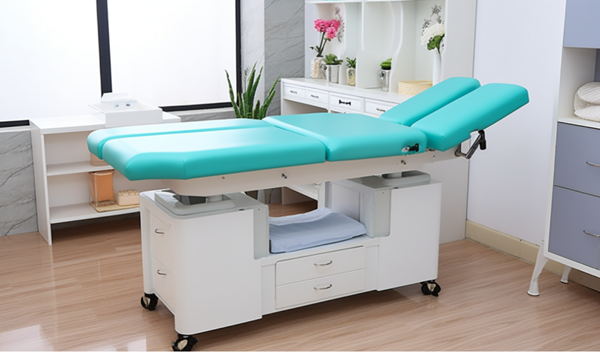
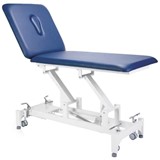

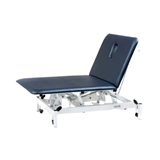

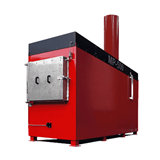



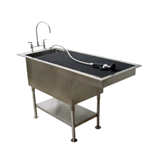


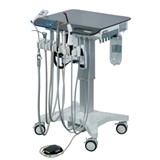

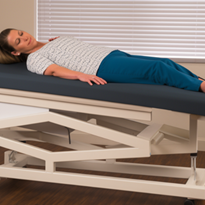
-205x205.png)
